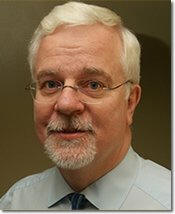Catholic Medical Quarterly Volume 64(3) August 2014
Correspondence
The Spectrum of Death:
An evolving culture in medicine
Dr Michael Jarmulowicz
 Sir,
Sir,
May I commend Eugene Breen (CMQ May 2014) on a very clear and readable account of the principles underpinning the sanctity of life and how our culture is in danger of undermining (many would argue already has) those principles.
I am not sure whether he is writing from experience, as he does not give his healthcare credentials, but I have to take issue with the examples he gives. The article was published with an editorial comment about ventilation, but I would argue that the use of an intensive care scenario to discuss where the culture of death can prevail is sadly the wrong example.
I would venture to say that a large percentage of intensive care is ‘extraordinary treatment’. Admission to ITU should be for patients where there is failure (or likelyhood of failure) of a major organ system but where there is a hope that the body can recover. In ITU the various organ systems can be supported (respiratory by ventilation; cardiac with ionotropic drugs; kidneys with haemofiltration etc) in the hope and expectation that the body will recover sufficiently to take back control of its own homeostasis. Once the prospect of this not happening becomes apparent then it is appropriate to withdraw that support as it essentially becomes futile treatment.
Such decisions are not easy and are based on judgement and experience rather than unequivocal fact. For example age is a factor; the physiological reality is that a young person is much more likely to recover from an illness requiring ITU care than an elderly with an identical problem, and such factors cannot be ignored in any judgement. e.g. I recall from my student days a crude ‘equation’ for assessing the mortality in burn victims; Mortality = percentage burns + patient’s age (+ 17 if inhalation injury).
Specific examples I would disagree with are that I do not believe that the concept of ‘maintenance ventilation’ exists; that is vitalism, which is keeping a patient alive at all costs. Equally it is totally inappropriate to give intensive care to someone terminally ill. The very phrase ‘terminally ill’ indicates that the patient is approaching death – albeit a time frame may be prolonged. The purpose of ITU is to help patients recover – which a terminally ill patient by definition will not.
I believe the real challenge is in treating the frail elderly. As explained well in the article, we must never ‘play God’ and take action / withhold treatment in order to bring about death, but equally are we ‘playing God’ by giving treatment when the reality is that we should be recognising that a patient has come to the natural end of their life. Of course symptom control should always be given.
In conclusion I commend Eugene Breen on a clear explanation of the principles, but sadly I think the explanation was marred by some use of inappropriate examples.
Rev Dr Michael Jarmulowicz
Permanent Deacon and histopathologist
who has recently taken early retirement from pathology.
